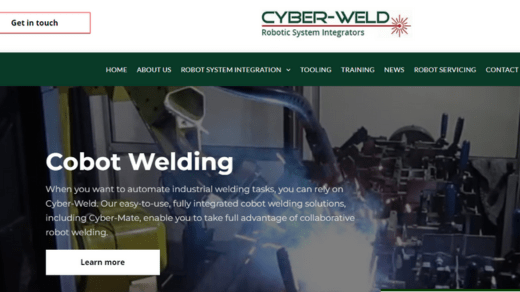Collaborative robots, often referred to as “cobots,” have transformed the landscape of manufacturing across various industries. Cobot welding, in particular, has emerged as a game-changing application that combines the precision and efficiency of traditional welding with the adaptability and safety of collaborative robots. In this article, we will explore the concept of cobots, delve into their role in welding processes, and highlight the benefits they bring to modern manufacturing.
Understanding Cobots
Collaborative robots, or cobots, are a new generation of robots designed to work collaboratively alongside human operators. Unlike traditional industrial robots that often require specialized programming and safety measures, cobots are built with advanced sensors and safety features that allow them to interact safely with human workers. These robots are highly versatile and can be easily programmed for a wide range of tasks, including welding.
Cobot Welding: A Transformative Technology
Traditionally, welding has been a labor-intensive and potentially hazardous process, requiring skilled human operators to work with precision and accuracy. Cobot welding, however, introduces automation and collaboration to the welding shop floor, revolutionizing this critical manufacturing process.
Key Advantages of Cobot Welding:
- Enhanced Safety: Cobots are equipped with sensors that can detect the presence of humans and adjust their movements accordingly. This ensures a safer working environment by reducing the risk of accidents and injuries.
- Precision and Consistency: Cobots excel in delivering precise and consistent welds, eliminating human errors and variations in quality. This leads to higher product quality and fewer defects.
- Increased Efficiency: Cobot welding is faster and more efficient than manual welding. Cobots can work continuously without fatigue, resulting in increased productivity and shorter production cycles.
- Versatility: Cobots can be easily reprogrammed for various welding tasks, making them adaptable to changing production needs. This flexibility is especially valuable in industries with diverse product lines.
- Cost Savings: While initial investments in cobot technology may be higher, the long-term cost savings in reduced labor costs, improved efficiency, and decreased rework make them a cost-effective solution.
Applications of Cobot Welding:
- Automotive Industry: Cobot welding is extensively used in the automotive sector for tasks such as body welding, chassis welding, and spot welding.
- Aerospace Industry: Precision welding of aircraft components requires consistency and accuracy, making cobot welding an ideal solution.
- Heavy Machinery Manufacturing: Welding of large and complex structures, such as heavy machinery components, benefits from cobot automation.
- Metal Fabrication: Cobots are employed in various metal fabrication processes, including welding of structural steel, pipes, and custom metal parts.
Challenges and Considerations:
While cobot welding offers numerous advantages, it’s essential to address some challenges, including:
- Programming: Cobots require programming expertise, and operators need training to set up and maintain them effectively.
- Integration: Seamless integration of cobots into existing manufacturing processes may require modifications and adjustments.
- Cost: The initial investment in cobot technology and programming can be relatively high, but it is often justified by long-term benefits.
Conclusion
Cobot welding represents a transformative technology in manufacturing, offering enhanced safety, precision, efficiency, and versatility. As industries seek to improve productivity, quality, and workplace safety, cobot welding is poised to play an increasingly pivotal role in the future of manufacturing. Its ability to collaborate with human workers while delivering consistent and high-quality welds positions it as a valuable asset in today’s competitive manufacturing landscape
Check out Cyber-Weld for more.

